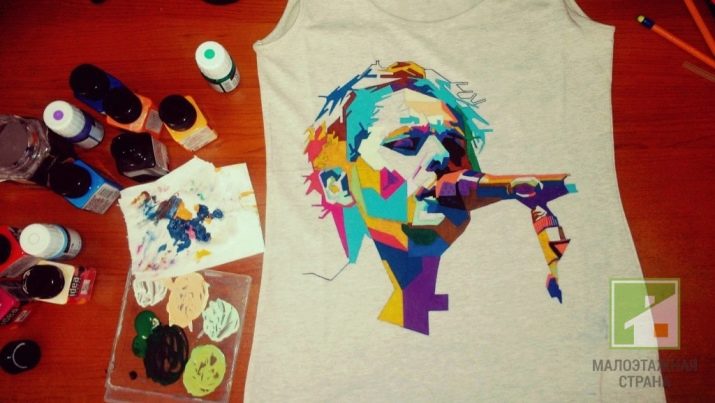All about fabric dyes
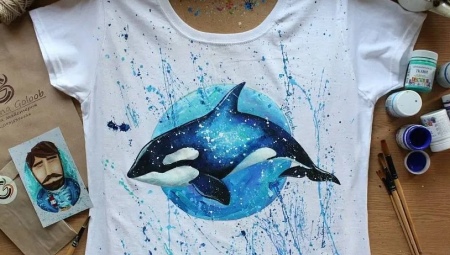
People have been dyeing fabrics for a long time. They practiced both full coloring of the surface and the creation of some interesting patterns on it. In the modern world, it has become much easier to do this, because there are a large number of fabric dyes on sale.
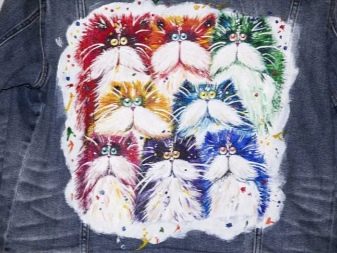
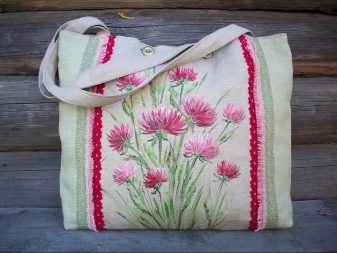
Peculiarities
Fabric dyes can be used in a variety of applications.
- Fashion industry. Most often, dyes are used to create unique designer items. Most types of paints are used for dyeing clothes. At home, they are used to restore old things, as well as to make new outfits unique.
- Furniture industry. Using dyes, you can easily change the look of a sofa, armchair, or any other fabric upholstered furniture.
- Textile industry. Various types of dyes are also often used to dye curtains, tablecloths and other interior items. Pigments are also useful for creating original panels.
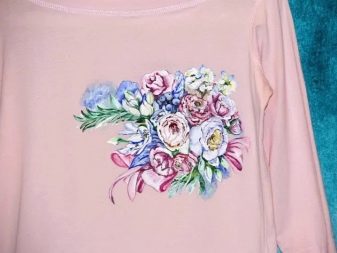
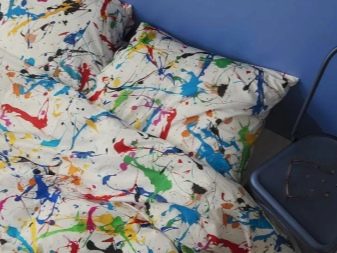
Creative people often use colorful paints to create various accessories and crafts.
Types of dyes
There are now several main varieties of fabric dyes. They all have their own characteristics.
Acrylic
This type of dye can be used to dye silk, cotton and woolen fabrics. Acrylic paints are loved for their versatility. Using such material, a person can create both a large panel and a neat drawing consisting of thin lines. Acrylic paints are usually used for painting decorative items or accessories.
Acrylic has no unpleasant odor. Paints for painting are diluted with water, and after complete drying they become waterproof. Therefore, things painted with a similar dye can be washed. But it's best to do it by hand in warm water.
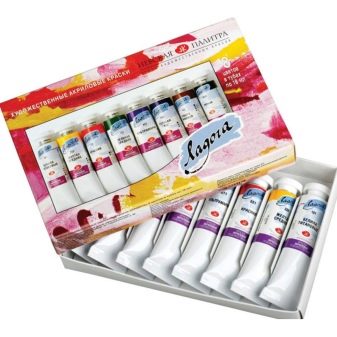
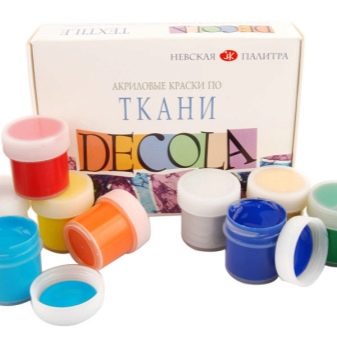
Aniline
These dyes can be either powder or liquid. They are used for single color fabric dyeing. Such paints are used only for working with natural materials. Using aniline dyes, you can achieve the following effects.
- Gradient. Many people like this color. The fabric gradually changes its color from lighter to darker. It is quite easy to get this result when staining at home.
- Divorce. In the 90s, denim products were dyed at home in this way. The thing was twisted, tied with a rope, and then lowered into a container with dye. In this form, it was boiled for several minutes. The result was unique every time. Lovers of retro clothes can now try to dye something in a similar way.
- Knot pattern. To create such a simple print, small coins are tied with threads and laid on fabric. After staining, in the place where they lay, simple patterns in the form of thin rays remain.
Fabrics dyed with aniline dyes retain their brightness for a long time.
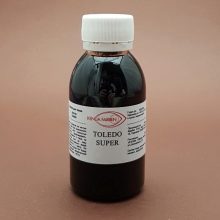
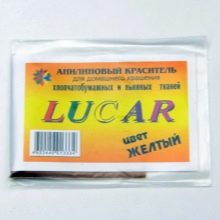

Stamp
This type of ink is used to mark towels, bed linen and other textile products. There are several types of stamp dyes on the market.
- Alcohol-based. These paints are the most durable. They can withstand repeated boiling and bleaching. They also dry very quickly. Therefore, it is very convenient to use them.
- Water based. These paints are also absorbed rather quickly. During the dyeing process, they do not get your hands dirty. You can wash things painted with such paints at a high temperature. The most popular color for such dyes is black.
- Oil based. The permanent colorant is of excellent quality. But he also has a significant disadvantage. Such paint dries for a long time after being applied to the fabric.
- Colorless. This type of dye is used for hidden labeling of things. The inscriptions and patterns applied to the fabric with such paint are invisible under normal lighting. They can be noticed only under the influence of ultraviolet radiation.
Most often, such paints are used in the hotel business.
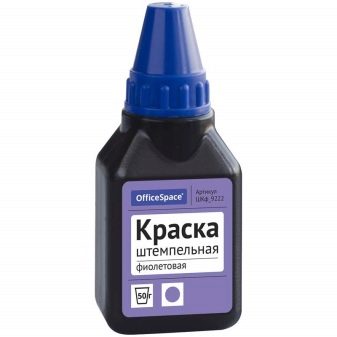
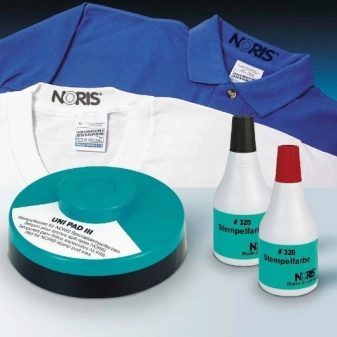
Plastisol
This type of paint is used to create designs that glow in the dark. The material is used for dyeing both clothes and shoes with a fabric base.
The most popular now are paints that appear white in daylight, and change their color at night. They can glow blue, yellow, blue, red or any other color.
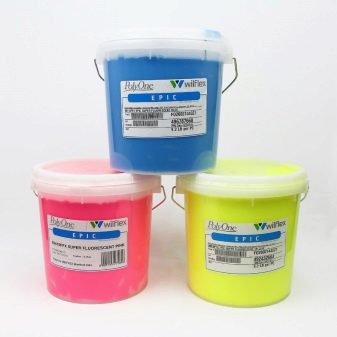
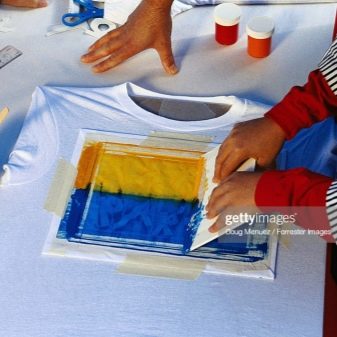
Natural
Natural dyes are also suitable for dyeing fabrics at home. These products are time-tested. You can use different raw materials to give the fabric the desired color.
-
Onion peel. Many housewives use this product to color eggs for Easter. But not everyone realizes that the husk infusion can be used in working with tissues. The fluid makes the material yellow, orange, or light brown. You can achieve the same result using natural dyes such as nettle leaves, oak bark and spruce cones.
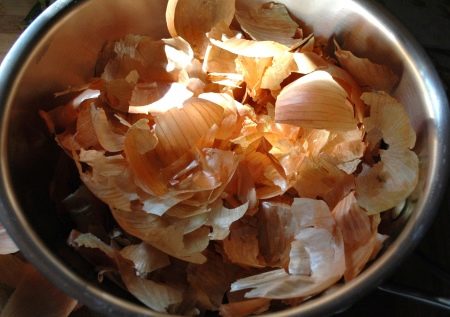
- Coffee and tea. These products are used for more than artificial aging of paper. They can be used to dye fabrics dark. A strong and well-strained drink makes the black color richer.
He paints light fabrics in a pleasant beige or light brown shade.
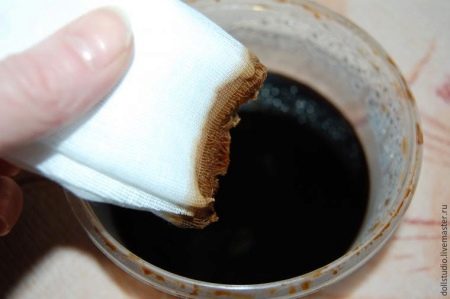
- Turmeric. This product allows the fabric to be dyed a pleasant yellow color. The more concentrated the solution is used for work, the richer the final shade looks.
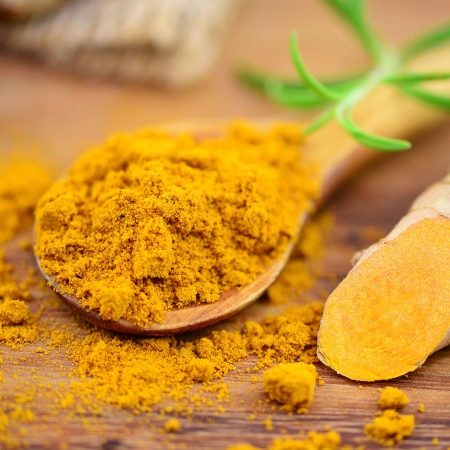
- Juices. You can use both berry, fruit and vegetable juices in your work. The most commonly chosen products for dyeing fabrics are beets, blackberries and blueberries.
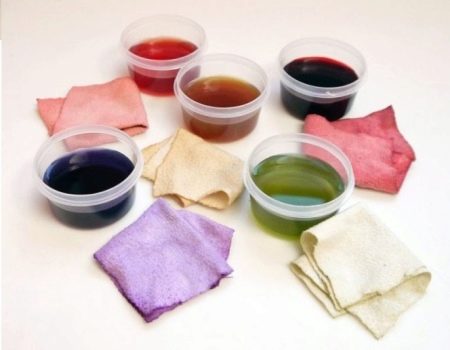
- Hair dye. This material can be used to dye denim dark. Henna can also be used instead of hair dye. The main thing is to choose a quality product for work.
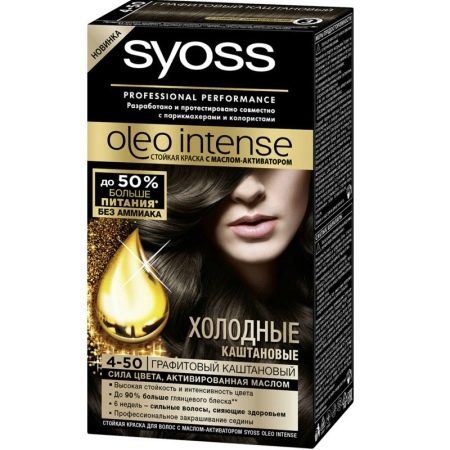
All these materials are environmentally friendly and safe for human health. Therefore, they can be used for coloring even for allergy sufferers or people with sensitive skin.
Aerosol
These paints are the most convenient to use. They are used to dye large areas of fabric, as well as to create stencil designs. You can find on sale paints of almost any color, including silver or gold.
When painting the material with such paint, it is worth remembering that after processing the matter becomes harsh and completely ceases to stretch.
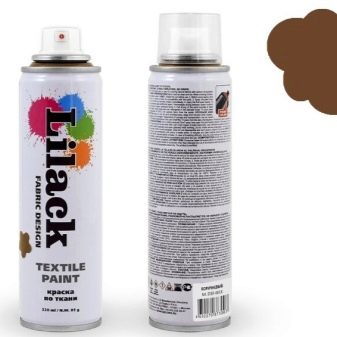
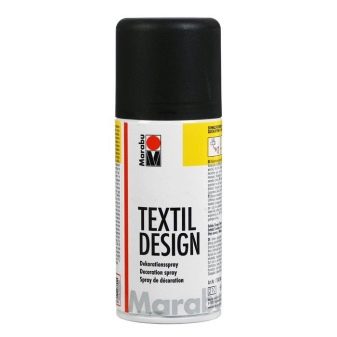
Glow in the dark
Luminescent paints are completely safe for humans. They are sold as a powder that can be applied to any fabric. Areas stained with such a product may glow in the dark.
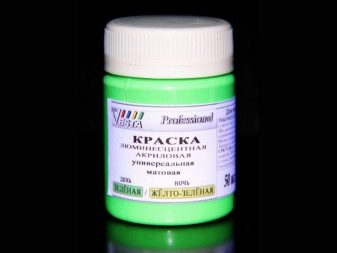
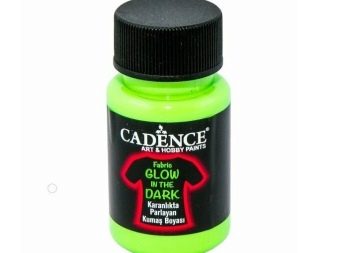
Popular manufacturers
When buying paints for dyeing fabrics, you should pay attention to products from trusted manufacturers.
- Marabu. This company is engaged in the production of acrylic paints. The product contains small particles of pigment. Therefore, the paints fit well on the surface to be painted and do not make it more voluminous and rigid.
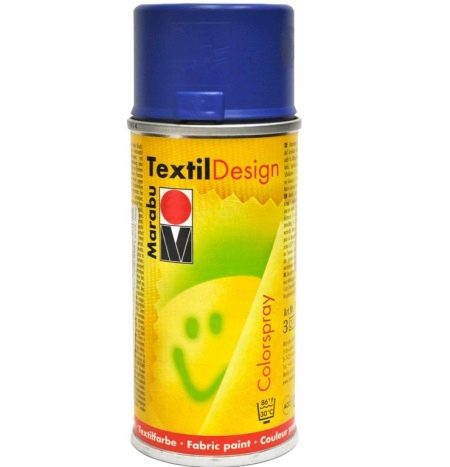
- Dylon. This brand also produces acrylic paints. Their products are great for beginners. It fits well on fabric. Using products from this brand, you can create elegant detailed drawings.
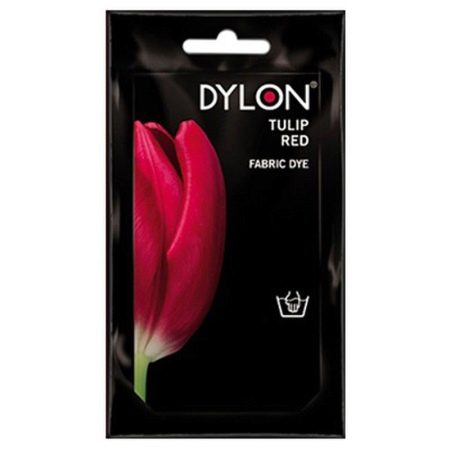
- "Batik acrylic". This company has a very diverse color palette. You can find about 30 flowers on sale. All of these products can be used to dye both natural and synthetic fabrics. This dye is not suitable only for working with silk. To fix the paint, the painted parts of the product must be ironed with an iron from the wrong side.
Do this only after the drawing is completely dry.
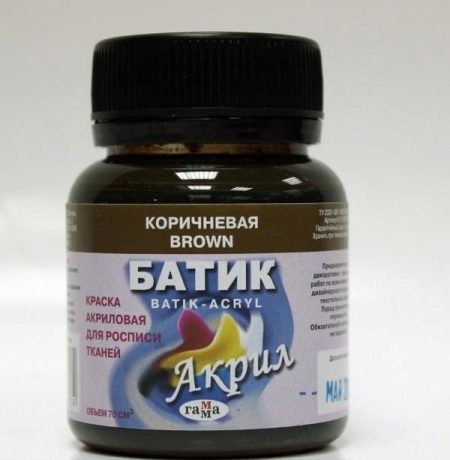
- "Gamma". This domestic company is engaged in the production of aniline dyes. They are distinguished by their rich color and durability. Universal paints can be used to dye both clothing and home textiles.

- Procion H Dyes. This liquid paint is used for dyeing all types of fabrics. Both professionals and amateurs can work with it.
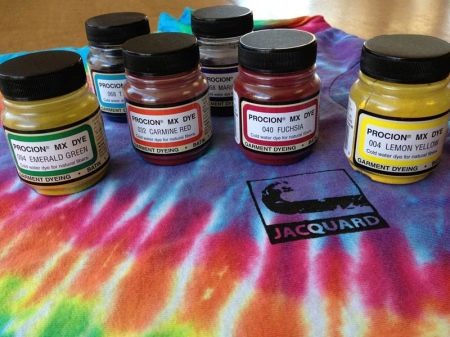
- Elbesoie. French paint is very popular among creative people. There are many different colors on sale. The paint adheres perfectly to the fabric. It is resistant to light and can withstand repeated washing.
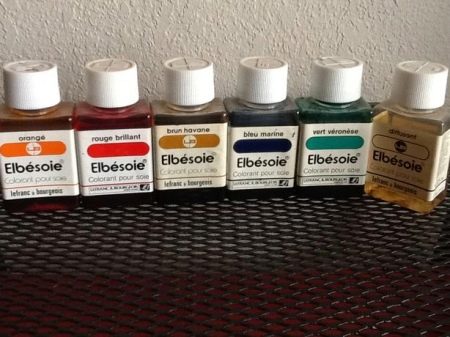
- "Tekhnokhim". This dye is ideal for working with denim. Using products from this brand, it is quite possible to give old things a second life. They will look very beautiful after staining.
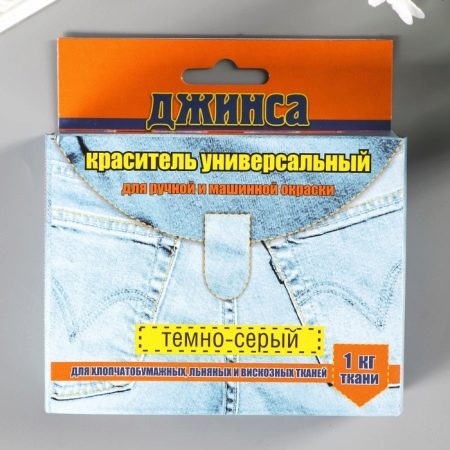
- "Ray". Acrylic paints from this manufacturer can be purchased at many craft stores. They are sold in sets of several colors. The paint from this brand is very good. It lays on the fabric in an even layer and dries very quickly. The material can be used to dye most fabrics.
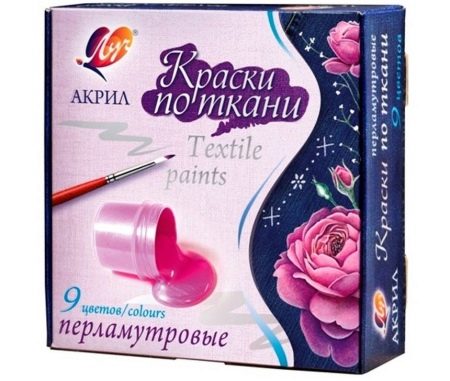
- Noxton. It is a popular reflective fabric paint. There are products in gray and white colors on sale. The material lies on the fabric in an even layer and does not form any cracks when folded.
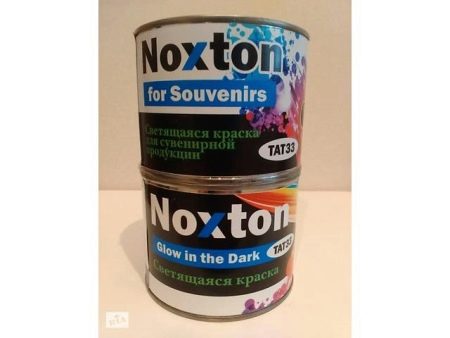
To dye one thing, you should not use products from several manufacturers.
What fabrics can be dyed?
At home, the easiest way to dye natural fabrics. The paint adheres well to materials such as linen, wool and cotton. Perfectly absorbs new colors and jeans.
Mixed fabrics of natural and synthetic fibers tend to dye slightly worse. But synthetics at home are not worth painting at all. After all, most of the paints on such fabrics do not last long.
They are washed out in just a few washes.
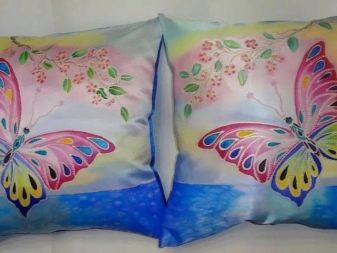
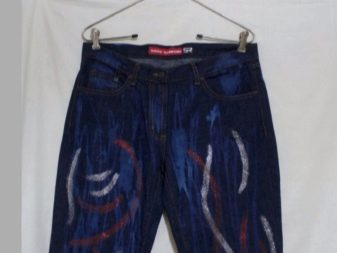
The nuances of staining
Having decided to dye or paint fabric products at home, you need to study the nuances of working with different materials in advance.
-
Acrylic. The process of dyeing fabric with acrylic looks very simple. Painting is no more difficult for them than with gouache or watercolors. To begin with, a schematic sketch is made on the fabric with a special marker or pencil. After that, using a brush made of natural pile, this drawing is painted. Stencils can be used for people who cannot draw. To make the drawing neat and even, you need to work with a brush very quickly. After finishing work, you need to wait a day, and then iron the thing with an iron from the wrong side.
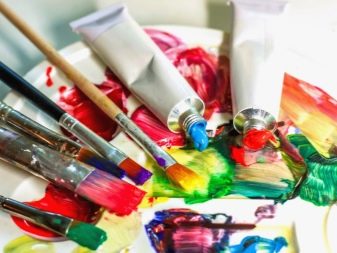

-
Aniline paints. Fabric dyeing consists of several basic steps. To begin with, the pigment is dissolved in a container of water, following the instructions on the package. Next, the fabric is placed there. It is boiled for several minutes. The longer the staining process lasts, the darker the color turns out. At the end of the procedure, add 2 tablespoons of salt to a container with a cloth. This allows the pigment to be fixed. When dyeing cotton fabrics, add a few tablespoons of soda to the water. If wool is processed - a couple of tablespoons of vinegar. After staining, the thing must be rinsed. It is worth remembering that the first few times after washing, the fabric may fade. Therefore, it is recommended to wash it separately. You should also avoid soaking things before washing. This will cause the fabric to shed quickly.
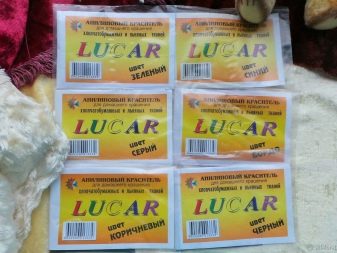
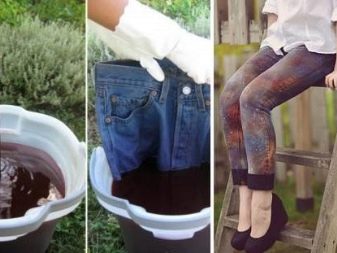
- Natural dyes. Natural pigments are used in the same way as aniline paints. To begin with, an infusion of the desired concentration is prepared. After that, a cloth is placed in a container with hot liquid. To fix the pigment, the material is treated with a weak solution of potassium dichromate or copper sulfate. After staining, the material is rinsed with a weak vinegar solution.
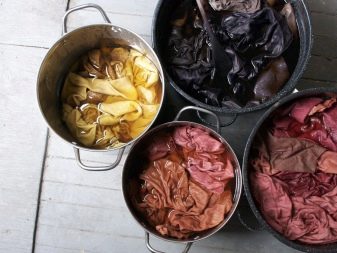
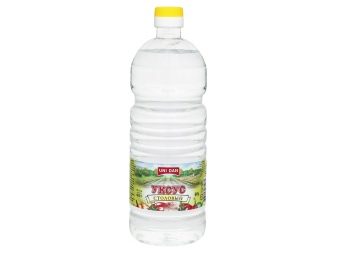
- Plastisol paints. Before dyeing the fabric, the garment must be washed and ironed. Next, using a synthetic brush, you need to apply the first layer of paint to the surface. After waiting until it is completely dry, this procedure must be repeated. As a rule, 2-3 layers of paint are applied to the fabric. This makes the drawing bright and beautiful.
At the end of the work, the jeans are left to dry for two hours.
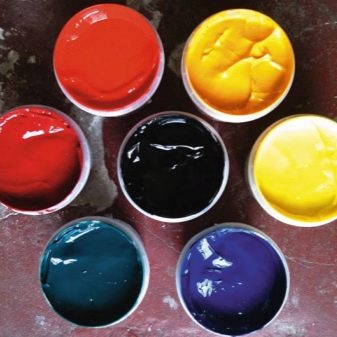
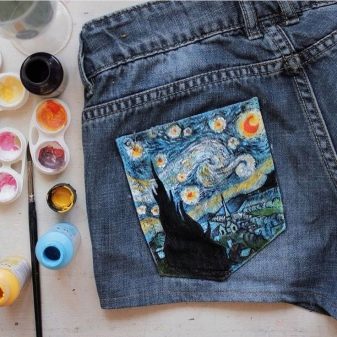
- Aerosol paints. Paint cans are commonly used to create abstract patterns on fabrics or simple stencils and lettering. It is recommended to paint the fabric outdoors or in a well-ventilated area. The paint can be applied in one layer or in several. After processing, the thing must be left in the fresh air for a short while. During this time, the unpleasant odor will disappear, and the material will dry out.
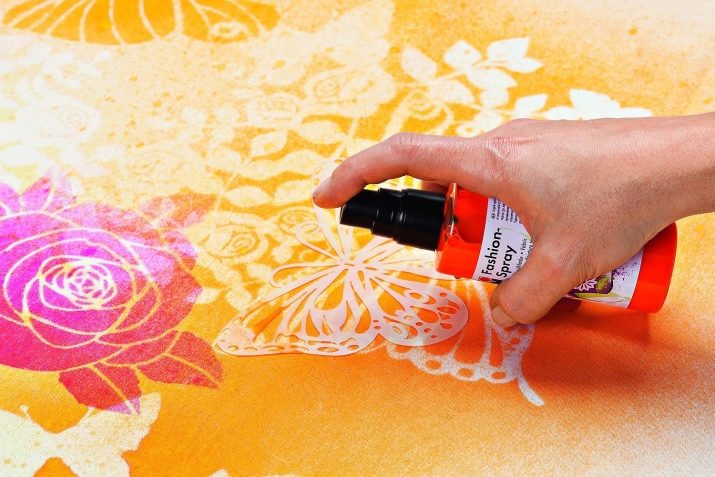
Before you start dyeing the desired item, the paint should be tested on a small area of unnecessary fabric. This will avoid many problems. In addition, it will be immediately clear how the thing painted with the selected material looks like.
If you choose high-quality dyes and use them according to the instructions, the fabric will retain its brightness and attractiveness for a long time.
